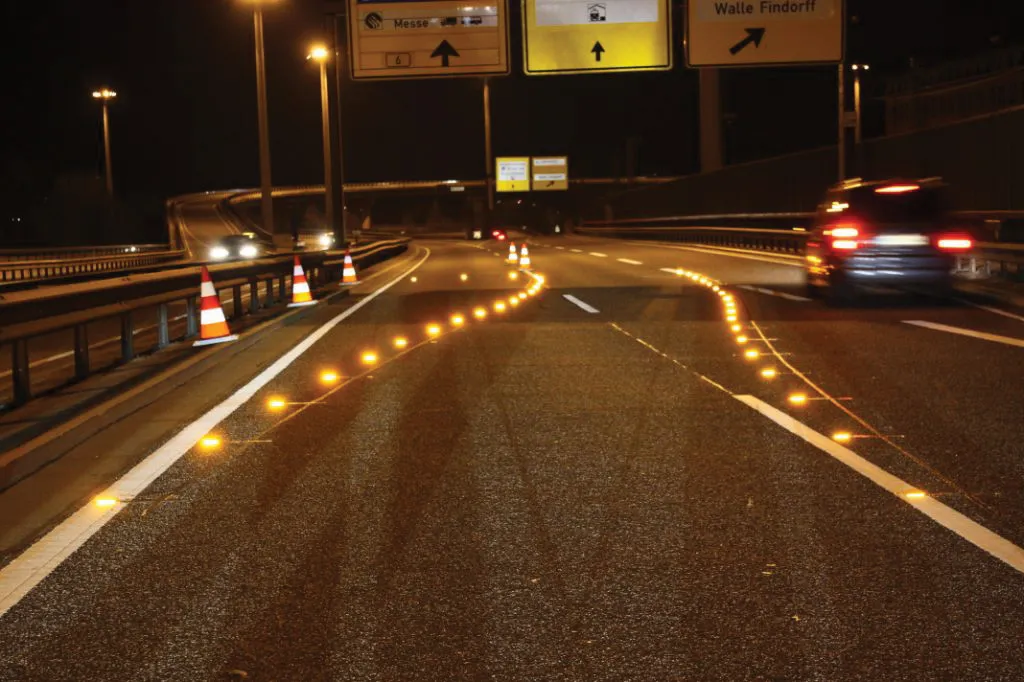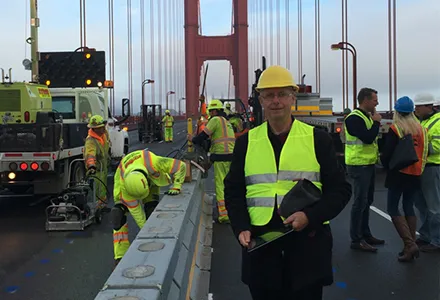3i Traffic, a division of 3i Innovation, had its iiiLEVEL road marking installed last year in the Terrace Tunnel, the busiest in the New Zealand city of Wellington. The inductively powered system comprises flush-mounted iiiLEVEL road markers, with uni-/bi-directional light direction and red and white LEDs. The intelligent iiiLEVEL road markers are said to provide dimming functions for day and night time adaption as well as emergency functions with all sides (light directions) on. A previous Terrace Tunnel o
February 21, 2013
Read time: 2 mins

3i Traffic, a division of 151 3i Innovation, had its iiiLEVEL road marking installed last year in the Terrace Tunnel, the busiest in the New Zealand city of Wellington. The inductively powered system comprises flush-mounted iiiLEVEL road markers, with uni-/bi-directional light direction and red and white LEDs. The intelligent iiiLEVEL road markers are said to provide dimming functions for day and night time adaption as well as emergency functions with all sides (light directions) on.
A previous Terrace Tunnel operator-led upgrade in 2001 had seen the introduction of white SMARTSTUD road marking to create a second lane to separate traffic. Five years earlier, the world’s first inductively powered LED road marker system had been successfully installed in the Tunnel.
Among the advantages of inductive powered road marking, claims 3i Traffic, is its speed of installation, low maintenance, fast identification of faults, and low power consumption. It is also not said to suffer from corrosion, is waterproof, impervious to chemicals and debris, and is non-sparking, increasing its safety value.
The B6 highway in Bremen, Germany has also seen a recent installation of 3i Traffic’s flush-mounted iiiLEVEL LED road marking. iiiLEVEL marking is said to have been introduced by the road’s authority to increase motorists’ visibility of lane closures for temporary and long term work zones.
A previous Terrace Tunnel operator-led upgrade in 2001 had seen the introduction of white SMARTSTUD road marking to create a second lane to separate traffic. Five years earlier, the world’s first inductively powered LED road marker system had been successfully installed in the Tunnel.
Among the advantages of inductive powered road marking, claims 3i Traffic, is its speed of installation, low maintenance, fast identification of faults, and low power consumption. It is also not said to suffer from corrosion, is waterproof, impervious to chemicals and debris, and is non-sparking, increasing its safety value.
The B6 highway in Bremen, Germany has also seen a recent installation of 3i Traffic’s flush-mounted iiiLEVEL LED road marking. iiiLEVEL marking is said to have been introduced by the road’s authority to increase motorists’ visibility of lane closures for temporary and long term work zones.









